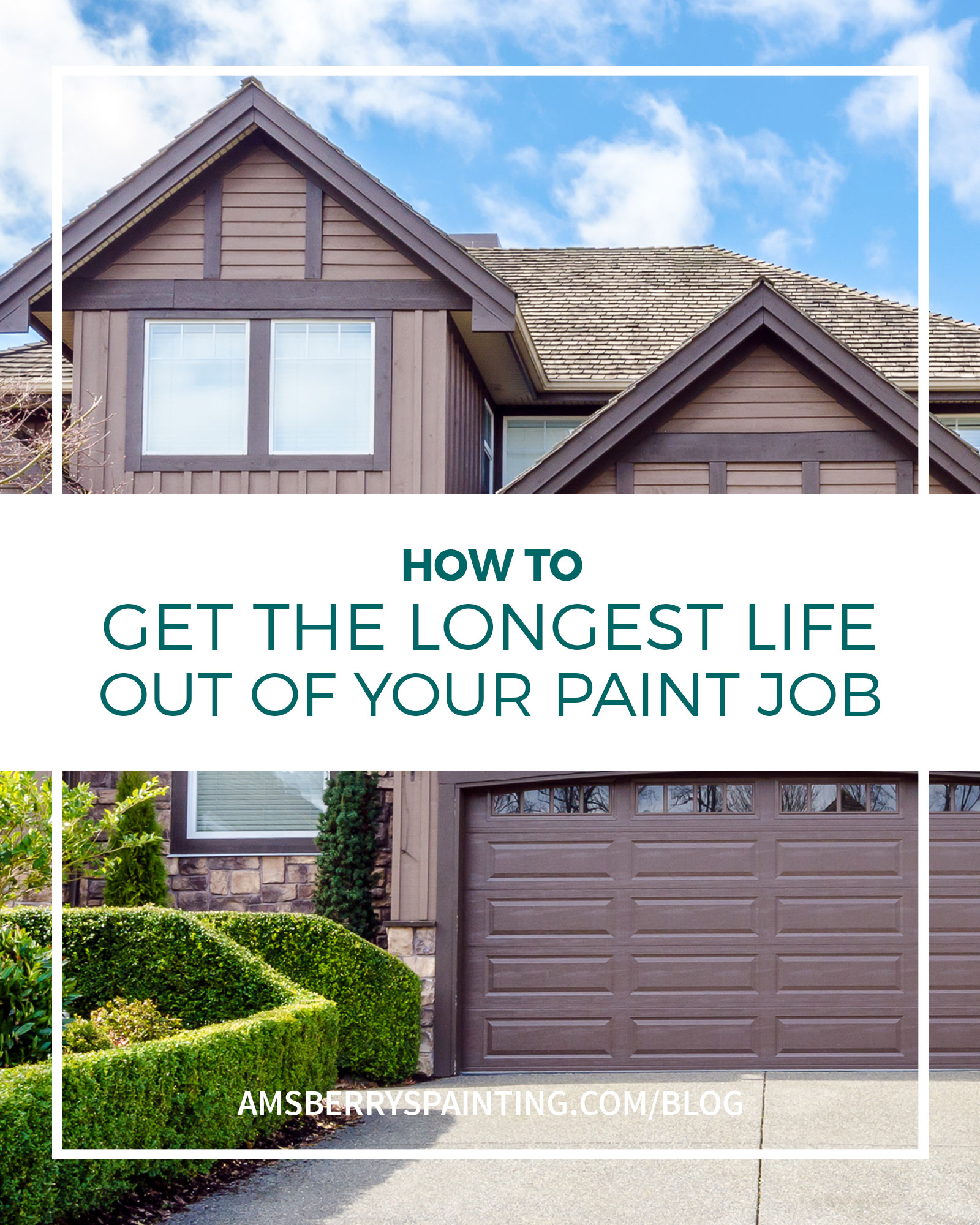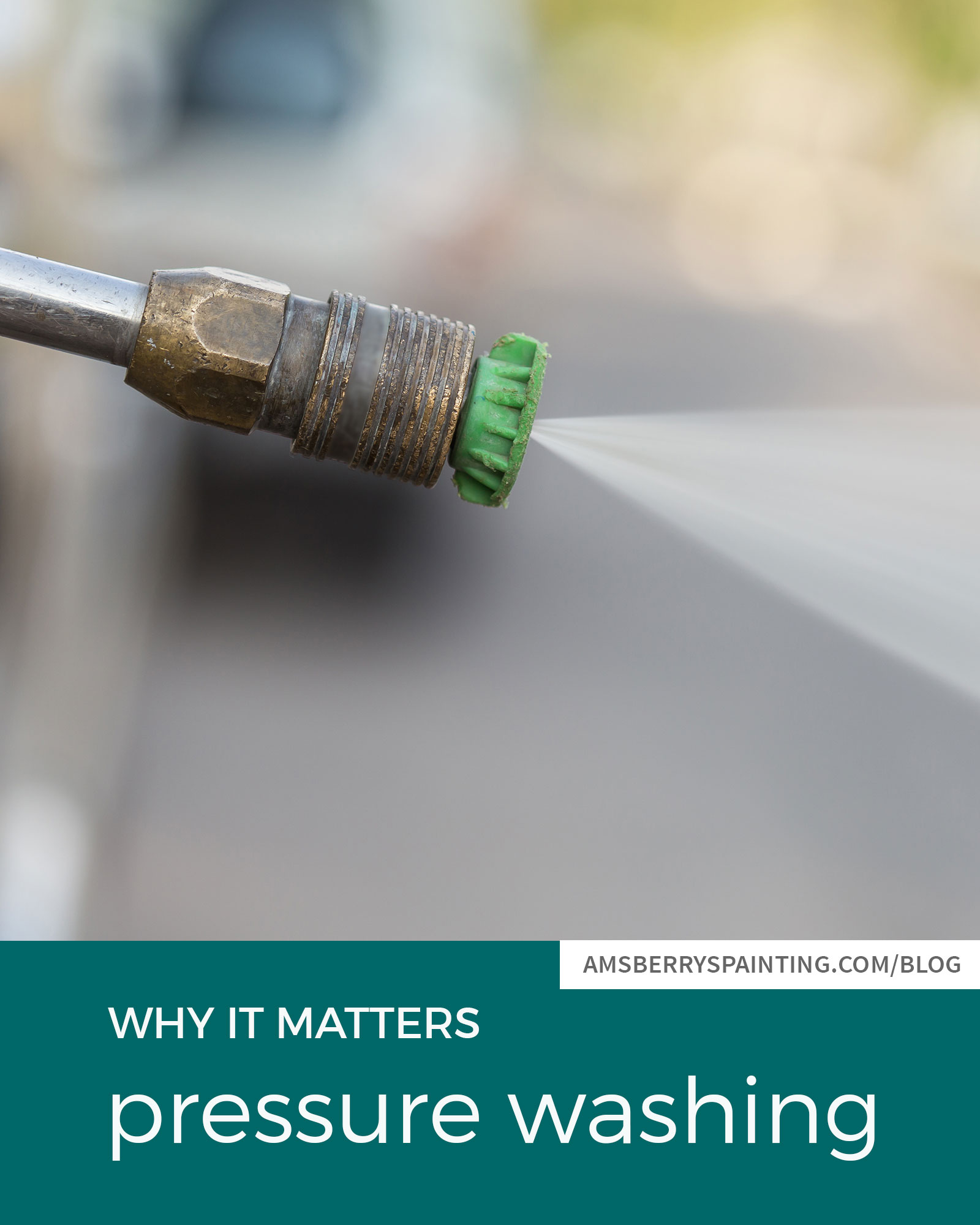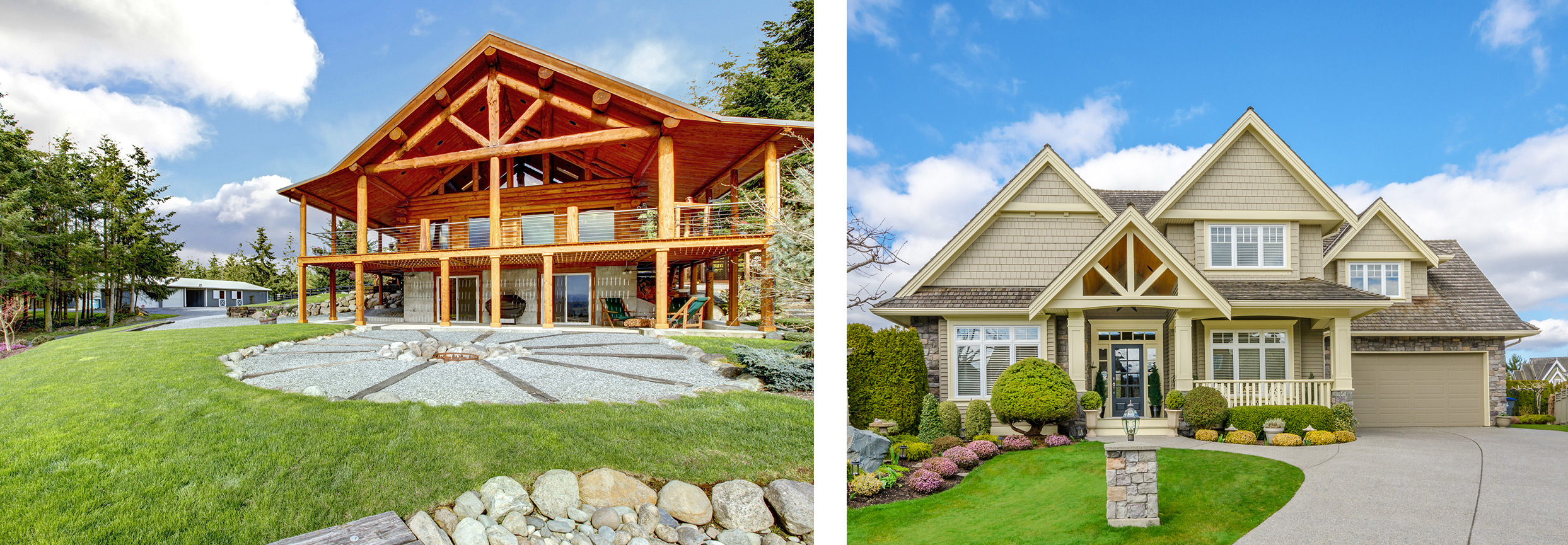
06 Apr How Often to Paint or Stain Your House Exterior
Whether you’re a new homeowner or a seasoned one, you probably have questions around how often and when to paint or stain the exterior of your home. How often? What time of year? What product? Why?
The frequency with which to have your exterior done is entirely dependent upon what sort of product it requires. If your home is painted, your exterior is likely siding. If your exterior is stained then it is a shingle exterior, a log exterior, or cedar siding. It is common to have a mix of the two: A painted home with shingled gables.
The usual time gap between repainting and re-staining depends on what products have been used on your home as well as the climate and weather conditions. See the quick guide below for our recommendations.
Quick Guide
Paint: 8-12 years.
Solid Stain: Every 5-10 years.
Semi-Transparent Stain: 3-5 years
Why Do I Need to Repaint/Restain My Home?
Ultimately, paint and stain on the exterior of a house serve two purposes: Protection and aesthetics. But like nearly everything else in the world, paint and stain have expiration dates. They are only capable of lasting a certain amount of time before paint or stain should be reapplied. As paint and stain protect your home from rain, snow, and exposure to sun, it is these elements that wear the products down over time.
Rain
Here in the Pacific Northwest, it’s very important that we recoat our homes is due to our excessive amount of rain. The extra moisture causes many varieties of mold and mildew to grow in unwanted places, such as on our buildings. The process of prepping and painting or staining includes the cleaning off of mold, mildew, and other forms of dirt and moss. Paint and stains, once applied, also have anti-mold attributes. Not only is your coating a protective layer between the raw wood of your house and the elements, but it’s actively protecting your home from potentially invasive elements.
Ultraviolet Rays
Even though we don’t see the sun as an issue very often here in Washington, ultraviolet rays wear down the coatings on your house. When it comes to paint, UV rays can cause your paint to fade, especially on the South facing side of your house. Overexposure to sunlight and dramatic fluctuation in temperature causes the wood of your house to expand, which results in cracked paint. Not only is cracked paint unsightly, but it allows water to seep into those cracks which will cause further damage to your siding if not taken care of immediately.
An essential part of our painting preparation process at Amsberry’s Painting is to scrape and then sand down areas where paint has cracked. Those areas are then primed and painted, making what was previously dry and cracked like new.
As far as stain goes, UV light can be very damaging to wood. By nature of the stain preserving the natural appearance of the wood, it is less protectant to the elements, and needs to be redone more often. Constant exposure to the sun causes aging, graying, and premature degradation in the wood. Consistent renewal of the stain, which acts as a protectant, helps prevent this from happening.
Why the Difference?
Solid stains and semi-transparent stains have different re-staining time frames because of their differing levels of protection. When applied, semi-transparent stain sinks into the wood, providing a protecting layer between the wood and the elements while also beautifully displaying the natural grain of the wood. Solid stain is very similar to paint in that it sits on top of the wood, bringing its own color to the wood. All forms of stain, however, are more susceptible to the elements than paint is. Paint lasts the longest because it’s a very thick layer, while stains naturally deteriorate faster due to the nature of their purpose of not concealing the natural wood. Both solid and semi-transparent stain exist in the medium between being thick and durable enough to protect your exterior for years and being thin and light enough to bring out the natural beauty of the wood.
Timing Matters
Painting
Not only is it important that you repaint or restain before the coating expires, but the time of year during which your recoat is something to consider as well. When you paint your house depends less on the seasons and more on the moisture and temperature levels. The surfaces that are being painted need to be clean and dry at the time of painting, and they need sufficient time after application to dry. When you are considering recoating the exterior of your home, there is a very important series of questions to ask:
- Is the surface that I intend to paint wet?
- Will the surface be rained on in the next 8-10 hours?
- Is the temperature below the recommended temperature on my paint can?
- Is the forecast predicting that the temperature will drop below the recommended temperature for the product that I’ve chosen?
We see it all the time in the Pacific Northwest on poorly timed exterior paint projects – Rain on newly applied paint causes streak marks to appear. Not only that, it’s also a poor decision to paint an exterior during a winter dry spell. Temperatures below 34 degrees (the absolute lowest that any paint product could dry properly at) cause sagging, bubbling, and cracking in fresh paint.
Staining
Temperature plays a huge part in the timing of your re-staining project as well. The ideal temperature to recoat a stain is 70 degrees Fahrenheit, but anywhere from 50-90 degrees is generally safe to do so. Like paint, this depends on the specific product, so always check the label before applying any product to your house. With staining, there is a different series of questions:
- Is it between 50-90 degrees Fahrenheit?
- Is the temperature predicted to dramatically drop or rise in the next 24 hours?
- Has it rained recently enough for the wood to be moist?
- Will the surface be rained on in the next 8-10 hours?
- Is the surface that I intend to stain in direct sunlight?
If the climate is too wet or cold, the drying time of your stain can more than double. In extreme cases, the stain can remain completely wet and just sit on top of your wood until the temperature rises. If it’s too warm, 100 degrees or more, it can cause the stain to dry too fast and could lead to lap marks or an uneven stain surface.
 Ready to Get Started?
Ready to Get Started?
Here in the Pacific Northwest we’re headed toward spring, which is the beginning of perfect weather to paint and stain exteriors. Despite our reputation for rain, our beautiful weather often lasts until late September. Here at Amsberry’s Painting, business is picking up as people begin to schedule exterior painting and staining jobs. Is it time to recoat your exterior and show your home some love? Schedule a free estimate today.

Writer Bio: Ellen Coy
Ellen is the Office Assistant, and resident blogger, at Amsberry’s Painting. She loves reading, writing, photography, and The Pacific Northwest. She can usually be found with a cup of tea.
Click on the graphics below to check out more of our blog posts!





 Ready to Get Started?
Ready to Get Started?